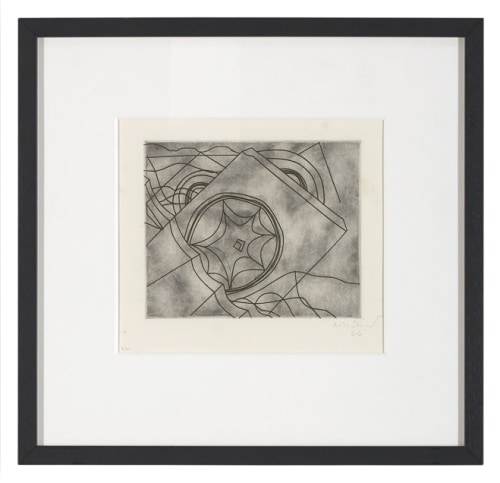Ben Nicholson OM (1894-1982) was a British painter and sculptor whose works were a major contribution to the history of abstraction. Known for his distillation of visual information into pared-down geometric shapes, the artist represents a melding of British sensibility with European modernism.
Born in Denham, to painters William Nicholson and Mabel Pryde, Nicholson studied at the Slade School of Art, London, where he was a contemporary of Stanley Spencer and Paul Nash. Nicholson’s early works were naturalistic, influenced by his father’s work; however, after visiting the studios of Braque, Brancusi, and Mondrian in Paris, Nicholson’s work grew increasingly concerned with formal structure.
During the late 1920s, Nicholson lived in St. Ives where he worked alongside the painter Christopher Wood and was also influenced by local fisherman and naive artist Alfred Wallis. In the 1930s, he began making works which melded sculpture, architecture, and design elements into simple forms, as seen in his work White Relief (1935). Over time, Nicholson’s style would loosen from the severe formalism of the 1930s, becoming a synthesis of observed visual information and linear abstraction.
Nicholson won the prestigious Carnegie Prize in 1952, and in 1968 received the British Order of Merit. His works are held in the collections of The Museum of Modern Art in New York, the Courtauld Institute of Art in London, the Tate St. Ives and the Walker Art Center in Minneapolis, among many others.
